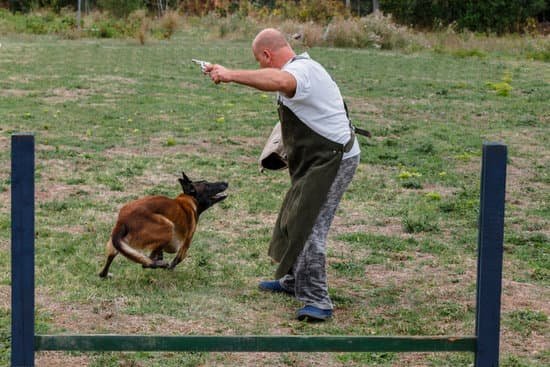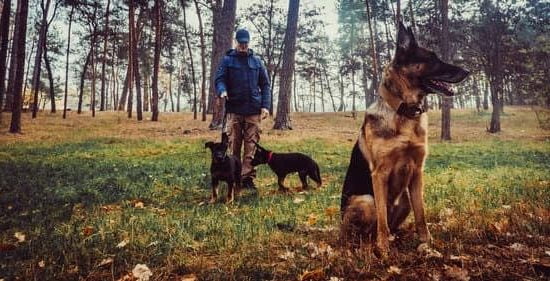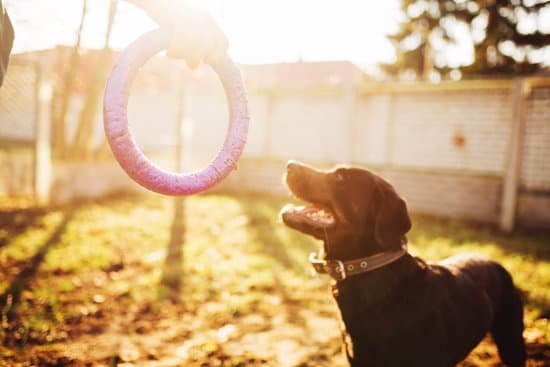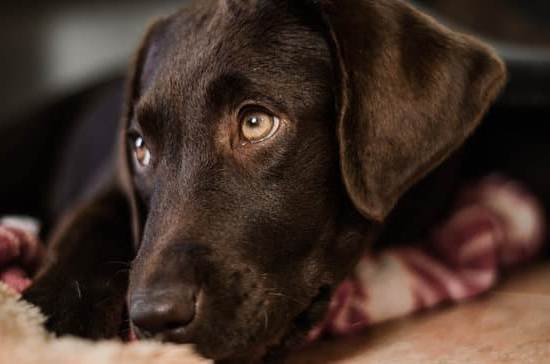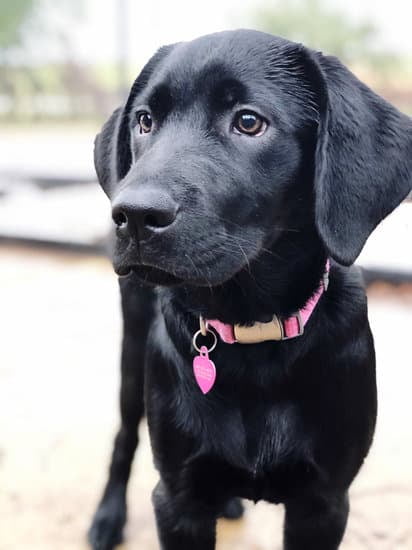Are you looking to engage your furry friend in a fun, active and mentally stimulating activity? Look no further than dog agility training. This popular canine sport is a fantastic way for both you and your pet to bond while also improving their physical fitness and mental acuity. Dog agility training involves guiding your dog through a challenging obstacle course, testing their speed, obedience, and agility.
Engaging in dog agility training offers numerous benefits for your pet. From improving their obedience and focus to enhancing their physical coordination and stamina, agility training can be an excellent way to keep your dog healthy and happy. Additionally, it provides an opportunity for socialization with other dogs and owners at training classes or competitions.
Before starting agility training with your dog, it’s essential to have the right equipment on hand. From tunnels and jumps to weave poles and contact obstacles, these tools will help create an engaging and stimulating course for your dog to navigate. But beyond equipment, choosing the right training program and techniques are equally important factors in ensuring a successful agility training journey for both you and your furry companion.
Benefits of Dog Agility Training for Your Pet
Dog agility training offers numerous benefits for your pet, both physically and mentally. Here are some of the key advantages:
1. Improved physical fitness: Dog agility training involves a variety of obstacles and activities that require your dog to jump, run, weave, and balance. This helps to improve their overall strength, endurance, and flexibility. By consistently practicing agility exercises, your dog can develop better muscle tone and cardiovascular health.
2. Mental stimulation: In addition to the physical benefits, agility training also provides mental stimulation for your dog. The problem-solving nature of navigating through various obstacles can help to keep their mind sharp and engaged. This can be particularly beneficial for high-energy breeds or working dogs that require mental challenges to stay happy and content.
3. Stronger bond with the owner: Participating in agility training with your dog can strengthen the bond between you and your pet. Working together as a team to overcome obstacles and complete courses creates a sense of trust and cooperation between you both.
In summary, dog agility training not only enhances your dog’s physical fitness but also provides mental stimulation and strengthens the bond between you and your pet. If you’re considering getting started with agility training, these benefits are all worth considering as you embark on this exciting journey with your canine companion.
Basic Equipment Needed for Dog Agility Training
When it comes to dog agility training, having the right equipment is essential for a successful and safe training experience. Whether you are training your dog at home or taking classes at a training facility, there are some basic pieces of equipment that you will need to get started.
One of the most important pieces of equipment for dog agility training is a set of agility obstacles. These can include hurdles, tunnels, weave poles, and a seesaw. These obstacles are not only used in competitions but also for training purposes to improve your dog’s agility and coordination. It is important to invest in high-quality and sturdy obstacles that are safe for your dog to use.
In addition to agility obstacles, you will also need basic training supplies such as treats, a clicker, and a leash. Treats are used as rewards during training sessions to encourage your dog to perform certain behaviors or complete an obstacle course.
A clicker is a useful tool for marking the exact moment when your dog has performed the desired behavior, making it easier for them to understand what they are being rewarded for. A leash is essential for guiding and controlling your dog during training sessions.
Lastly, it is essential to have proper safety equipment such as non-slip mats or grip tape to ensure that the agility obstacles are secure and stable during use. This will help prevent any accidents or injuries during training sessions. Additionally, having a first aid kit on hand is always a good idea in case of any minor injuries that may occur during agility training sessions.
Overall, having the right equipment is crucial for effective dog agility training. By investing in quality obstacles, basic training supplies, and safety equipment, you can provide your dog with a safe and enjoyable agility training experience.
Tips for Choosing the Right Training Program for Your Dog
When it comes to choosing the right training program for your dog, there are several factors to consider in order to ensure that you find the best fit for your pet. One of the most important things to keep in mind is your dog’s personality and temperament. Some dogs may thrive in a more structured and disciplined training environment, while others may do better with a more relaxed and positive reinforcement-based approach.
It’s also crucial to consider your own availability and commitment level when choosing a training program. Some programs may require a significant time commitment from you, while others may be more flexible and customizable to fit your schedule. Additionally, consider whether you prefer one-on-one training sessions with a professional trainer, group classes with other dog owners, or even online courses that you can do from the comfort of your own home.
Another important aspect to take into account is the specific skills and behaviors you want to focus on during the training program. If you are interested in pursuing dog agility training specifically, look for a program that has experience and expertise in this area. Make sure that the trainers have a solid understanding of agility equipment, techniques, and competition rules.
One great option for those interested in dog agility training is to look for facilities or trainers that have experience in preparing dogs for agility competitions. These programs often include obstacle courses, specialized equipment such as tunnels and weave poles, as well as expert guidance on how to navigate these challenges effectively. By choosing a program tailored to agility training, you can ensure that your dog gets the specialized attention they need to excel in this sport.
| Factors to Consider | Examples |
|---|---|
| Dog’s Personality and Temperament | Structured vs Positive Reinforcement-Based Approach |
| Availability and Commitment Level | Time Commitment; One-on-One vs Group Classes; Online Courses |
| Specific Skills and Behaviors | Focusing on Dog Agility Training; Experience in Agility Competitions |
Step-by-Step Guide to Starting Agility Training With Your Dog
Now that you have decided to start agility training with your dog, it’s important to understand the steps involved in getting started. Here is a step-by-step guide to help you begin your dog’s agility training journey:
1. Research and choose a training program: Before starting agility training, research and choose a suitable training program for your dog. Look for programs that focus on positive reinforcement and use force-free training techniques to ensure the safety and well-being of your pet.
2. Gather the necessary equipment: You will need some basic equipment to start agility training with your dog. This includes items such as tunnels, jumps, weave poles, and a pause table. It’s important to invest in high-quality and safe equipment that is suitable for your dog’s size and breed.
3. Start with foundational obedience training: Before diving into agility-specific exercises, it’s essential to establish a strong foundation of obedience training with your dog. Teach basic commands such as sit, stay, come, and heel before introducing agility obstacles.
4. Introduce basic agility exercises: Once your dog has mastered basic obedience commands, begin introducing him to simple agility exercises. Start with low jumps, tunnels, and weave poles at a slow pace to build confidence and prevent injury.
5. Gradually increase difficulty: As your dog becomes more comfortable with the basics of agility training, gradually increase the difficulty of the obstacles and exercises. Be patient and allow your dog to progress at his own pace to avoid overwhelming him.
By following this step-by-step guide, you can lay a solid foundation for your dog’s agility training journey while ensuring his safety and well-being throughout the process. Remember that consistency and patience are key when starting agility training with your furry companion.
Common Mistakes to Avoid in Dog Agility Training
Ignoring Proper Warm-Up and Cool-Down
One common mistake in dog agility training is failing to properly warm up and cool down your dog before and after a training session. Just like humans, dogs need to warm up their muscles before engaging in high-impact activities like agility training. A brisk walk or light jog can help prepare their muscles for the physical demands of the training session. Similarly, a cool-down period after training can help prevent injuries and muscle soreness.
Pushing Too Hard, Too Fast
Another mistake to avoid in dog agility training is pushing your pet too hard and too fast. It’s important to progress at a pace that is suitable for your dog’s fitness level and abilities. Overtraining or introducing advanced obstacles prematurely can lead to physical strain, mental burnout, and even behavioral issues. Building a strong foundation of basic skills and gradually increasing the difficulty of the exercises will set your dog up for long-term success in agility training.
Lack of Consistency and Positive Reinforcement
Consistency is key in any type of animal training, including dog agility training. Inconsistencies in commands, rewards, or expectations can confuse your dog and hinder their progress. Additionally, relying solely on punishment-based methods can have negative effects on your pet’s motivation and performance in agility training. Using positive reinforcement techniques such as treats, praise, and playtime will encourage your dog to enjoy the training process and achieve better results overall.
By avoiding these common mistakes in dog agility training, you will be able to create a positive and effective learning environment for your pet while also promoting their physical health and well-being.
Advanced Training Techniques for Agility Competitions
In the world of dog agility training, many pet owners and their canine companions are not just in it for fun and exercise; they also have their sights set on competing in agility competitions. These events are a great way for dogs and their owners to showcase their agility skills, speed, and teamwork. To succeed in these competitions, advanced training techniques are essential to take your dog’s skills to the next level.
One important aspect of advanced dog agility training is mastering more complex obstacle courses. This can include combining different obstacles in quick succession or increasing the height or distance of jumps and tunnels. It is crucial for handlers to work closely with their dogs to fine-tune their commands, timing, and coordination as they navigate these challenging courses.
Another key element of advanced agility training is enhancing a dog’s speed and accuracy on the course. This may involve incorporating interval training and sprint exercises into the overall fitness regimen, as well as practicing specific obstacle sequences to improve speed while maintaining precision. Additionally, incorporating mental stimulation exercises alongside physical training is beneficial to keep the dogs focused and sharp during competitions.
In addition to physical conditioning and mental focus, advanced training also involves refining handling techniques for agility competitions. Handlers must learn how to read courses effectively, anticipate their dog’s movements, and deliver clear signals while navigating through the obstacles with speed and accuracy.
Regular practice sessions with an experienced trainer can help handlers hone these skills and ensure that they are fully prepared for competitive agility events. By implementing these advanced training techniques, both you and your canine companion will be better equipped to tackle the challenges of agility competitions successfully.
Finding Local Dog Agility Training Classes and Events
If you’re interested in finding local dog agility training classes and events, there are several resources and methods you can use to locate them in your area. Whether you’re looking for a structured class with an experienced trainer or simply want to join a fun agility event, here are some tips for finding the right opportunities for you and your furry friend.
Online Resources
One of the easiest ways to locate local dog agility training classes and events is by searching online. There are websites and platforms dedicated to listing dog training and agility events in various areas. You can also check social media groups and forums related to dog agility to connect with other enthusiasts who might have information on upcoming events or classes.
Local Pet Stores and Dog Parks
Another option is to visit local pet stores or dog parks and inquire about any upcoming agility training programs or events. Many pet stores often have bulletin boards where they post flyers for different dog-related activities, including agility classes. Additionally, visiting a dog park can provide an opportunity to meet other dog owners who may be involved in agility training and can offer insights into local opportunities.
Dog Agility Associations
There are also national and regional associations dedicated to promoting dog agility sports. These organizations often have directories of certified trainers, clubs, and upcoming competitions in different regions. By connecting with these associations, you can gain access to a network of experienced trainers and fellow enthusiasts who can guide you towards local training opportunities.
The Importance of Consistency and Patience in Dog Agility Training
Consistency and patience are essential factors when it comes to dog agility training. These two elements play a crucial role in the overall success of your training program and the well-being of your pet. When it comes to consistency, it is important to maintain a regular schedule for training sessions with your dog. This helps in establishing a routine and allows your pet to understand what is expected of them during training.
Additionally, consistency also applies to the commands and cues that you use during dog agility training. It is important to use the same cues and gestures consistently so that your dog can easily understand and respond to them. This will help in building a strong foundation for your dog’s agility skills and improve their performance over time.
Patience is another key component of successful dog agility training. Every dog learns at their own pace, so it is essential to be patient and understanding throughout the process.
It is normal for dogs to make mistakes or take longer to grasp certain skills, so it’s important not to get frustrated and remain calm during training sessions. By being patient with your pet, you can create a positive learning environment and foster a strong bond between you and your furry friend during agility training sessions.
Consistency and patience go hand in hand when it comes to dog agility training, and they both contribute significantly to the success of your pet’s development in agility skills. As an owner, it’s important to understand that every dog has its own unique learning curve, so approaching each training session with consistency and patience will ultimately lead to better results in the long run.
Keeping Your Dog Safe and Healthy During Agility Training
In conclusion, dog agility training can be a fun and rewarding experience for both you and your pet. However, it is crucial to prioritize the safety and health of your dog throughout the training process. By following the tips and guidelines mentioned in this article, you can ensure that your furry friend stays safe, healthy, and happy while participating in agility training.
It is important to start with a proper warm-up and cool-down routine before and after each training session to prevent injuries and muscle strain. Additionally, keeping an eye on your dog’s behavior and physical condition during training can help you identify any signs of discomfort or exhaustion. This will allow you to make adjustments as needed to avoid any potential health issues.
Furthermore, maintaining a balanced diet, providing plenty of water, and scheduling regular veterinary check-ups are essential for keeping your dog healthy during agility training. Remember that every dog has its own unique capabilities and limitations, so it’s important to tailor the training program according to your dog’s individual needs. By prioritizing safety and health, you can ensure that both you and your furry companion enjoy a fulfilling journey in dog agility training.
Frequently Asked Questions
When Should a Puppy Start Agility Training?
A puppy can start agility training as early as 4-6 months old, once they have developed basic obedience skills and have been cleared by a veterinarian. It’s important to start with low-impact exercises to avoid injury.
How Can I Train My Dog to Do Agility at Home?
You can train your dog to do agility at home by setting up a simple obstacle course using household items like hula hoops, cones, and tunnels. Start with basic commands and gradually introduce more complex challenges.
Why Is Agility Good for Dogs?
Agility is good for dogs because it provides physical exercise, mental stimulation, and an opportunity to strengthen the bond between the dog and their owner. It also helps improve the dog’s coordination, confidence, and overall behavior.

Welcome to the blog! I am a professional dog trainer and have been working with dogs for many years. In this blog, I will be discussing various topics related to dog training, including tips, tricks, and advice. I hope you find this information helpful and informative. Thanks for reading!

